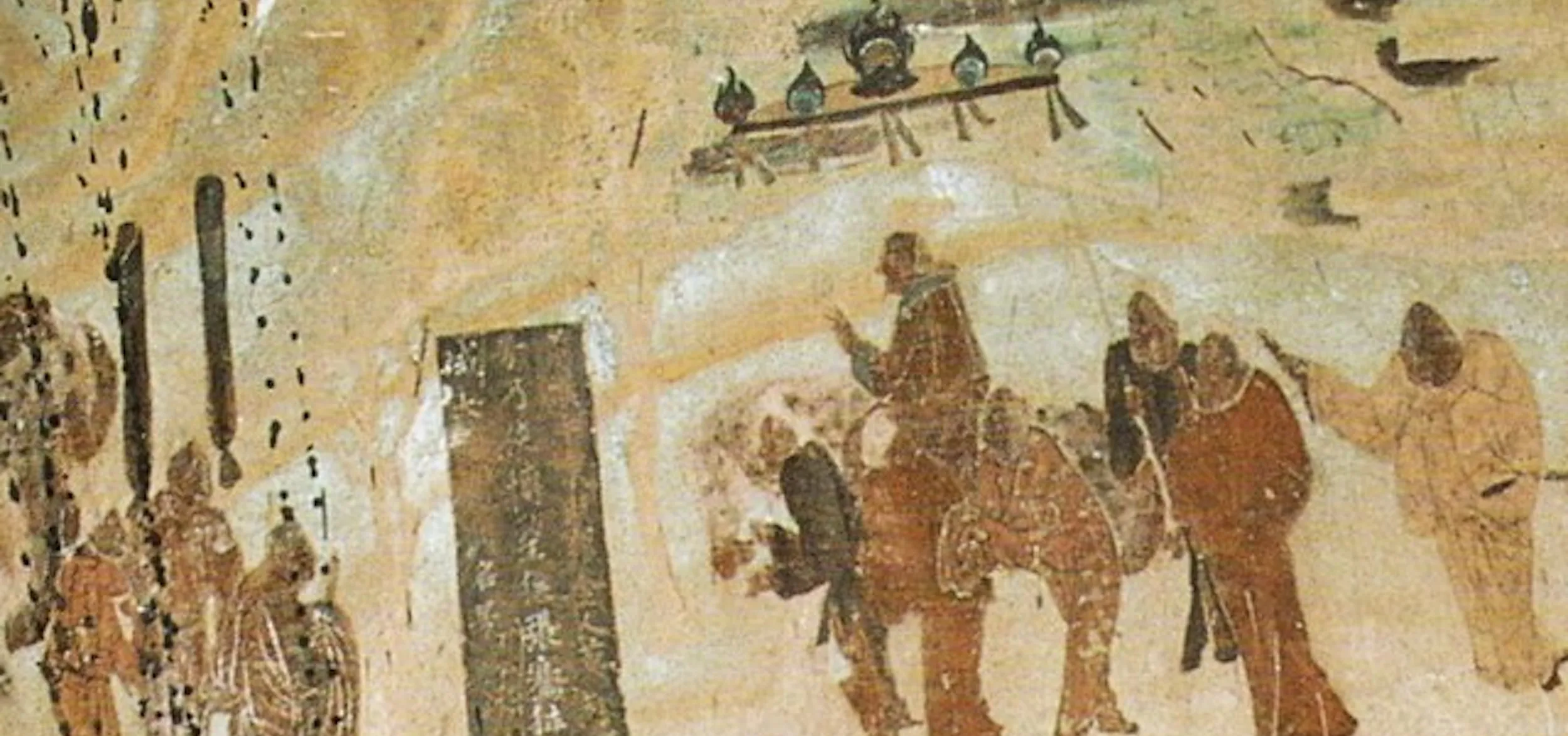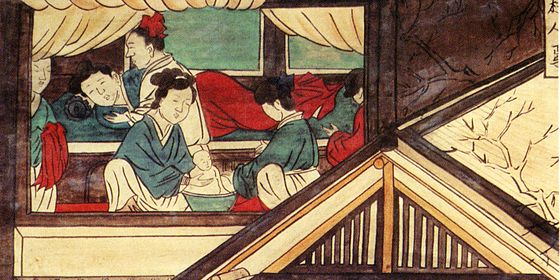How a low-ranking Han dynasty courtier came to be known as the founder of the Silk Road
One of China’s most ancient historical figures is now in the spotlight after thousands of years. Zhang Qian (张骞), a Chinese diplomat from the Han dynasty (206 BCE – 220 CE), is regularly name-dropped as the “founder of the Silk Road,” with President Xi Jinping calling him a “friendly emissary” on a “mission of peace” at the 2017 Belt and Road Forum for International Cooperation. It is thanks to Zhang, Chinese sources say, that an “open, inclusive and mutually beneficial modern Silk Road” is being built by Chinese trade initiatives.
How did a minor Han dynasty historical figure reach this position of public and international prominence? Though Zhang is presented as an ancient figure of trade and peace, his real story is much more complicated. Following the myth of Zhang Qian through history reveals a complex web of Chinese folk culture, religious movements, European influence, and PRC diplomacy.
Zhang Qian originally appeared in the Records of the Grand Historian (《史记》), a history of ancient China completed by historian Sima Qian sometime around 94 BCE. At this time in Chinese history, the Han dynasty was locked in a struggle with the Xiongnu, a powerful confederation of northwestern nomads. The militarily superior Xiongnu were a constant drain on the Han military and court treasuries. Finally, Emperor Wu of Han decided to handle the problem by forming an alliance with other tribes or kingdoms in the “western regions,” modern-day Xinjiang and Central Asia.
In 138 BCE, the emperor dispatched a low-ranking courtier named Zhang Qian into these unknown lands to seek a military alliance. This marks the first recorded official contact between a Chinese dynasty and the western regions. But unfortunately for the emperor’s military aspirations, Zhang did not complete his mission. He was captured twice by the Xiongnu and, after escaping them, discovered the western kingdoms weren’t interested in allying with the Han after all.
Yet the historical record remembers his journey differently. Zhang redeemed himself to the emperor by providing intelligence on the peoples of the western regions: their kingdoms, geographies, and economies. This intelligence led Emperor Wu to mount a direct campaign against the Xiongnu, eventually extending Han power into modern-day Gansu province. Zhang was remembered in the Records as a key part of the Han’s diplomacy and military strategy.
In later dynasties, Zhang’s famous journey west began to take on a life of its own in the Chinese cultural imagination. The Mogao Caves in the northwestern city of Dunhuang, one of ancient China's frontiers on the western regions, contain a mural of Zhang dating back to the early Tang dynasty (618 – 907). The wall of Cave 323 depicts Zhang, Emperor Wu, and the Xiongnu exchanging and worshiping Buddha statues. The myth that Zhang helped introduce Buddhism to China from the west was popular in this period, showing that his story was already being used to explain all sorts of exchange between China and the western lands.
The story of Zhang’s travels also became a popular element in Chinese folktales. In the Western Jin dynasty (265 – 317), stories recounted Zhang floating west along the Yellow River to meet the famous Chinese lovers of legend, the Cowherd and the Weaving Maid. During the Yuan dynasty (1206 – 1368), as Daoism grew in popularity in China, Zhang was said to have met a Daoist immortal on his western journey. As late as the Qing dynasty (1616 – 1911), Zhang continued to be depicted in carvings and artworks as floating on a raft to meet the Cowherd and Weaving Maid.
The tale of Zhang had drifted steadily away from the original story of his political and military expedition. But in the early 1900s, European explorers in Xinjiang, Gansu, and other western regions of China would bring this history to international prominence as they discovered well-preserved texts and artifacts in the desert sands, previously unknown to Europeans. Early explorers like Aurel Stein, Sven Hedin, and Paul Pelliot imagined an ancient trade route that was a lost cosmopolitan utopia, and in order to describe it, coined the term “Silk Road”, which was imported into Chinese in the 1930s through translations of their lectures and books.
Though the term “Silk Road” was new to the Chinese lexicon, the PRC adopted the term as a useful phrase for diplomats when establishing formal relations with other countries beginning in 1950. The term was already widely known in both Chinese and English-speaking worlds, with positive connotations of international openness and dialogue.
Chinese historical knowledge of Zhang Qian’s journey west soon began to merge with the “Silk Road” beliefs. It was not long before Chinese writers began to connect Zhang’s travels with the Western term. With his well-known cultural reputation for “going west,” and his position as the first recorded envoy between a Chinese dynasty and the western regions, Zhang’s association with the concept of Silk Road history was already strong. Possibly the first published record where Zhang was named as the Silk Road’s founder was a Guangming Daily article written by a Fudan University professor in 1975. This article gave the Silk Road a concrete starting point in history, fusing Western and Chinese understandings of China’s past.
As the Silk Road’s official pioneer, Zhang served as the foundation of Chinese diplomacy, providing historical evidence of friendly relations with foreign states. His journey has once again assumed a political role as an ambassador of open and collaborative Chinese diplomacy. Its impact on today’s China is so great that Shaanxi TV even created a reality show called The Silk Road Line (《丝绸之路万里行》 ) in 2014 following Zhang Lijun (张利军), a supposed descendant of Zhang Qian, and 50 other modern-day explorers driving from Xi'an to Rome. Official Chinese sources on the BRI point to Zhang Qian as both inspiration and evidence for Chinese leadership on this “new Silk Road” economic venture. Citing Zhang Qian as an amicable trade partner and responsible diplomat lets China advance its position as a historically cosmopolitan diplomatic entity.
Zhang Qian has always held a mythical place in Chinese history, as popular culture reinterpreted his westward journey to reflect new social conditions and religious movements. His enduring popularity in China today reflects the continued importance placed on westward-facing relations and cultural exchange. His role as Silk Road founder and BRI inspiration in turn reflects China’s assumed role of leadership and responsibility for these new economic corridors. In history, folklore, and modern-day international politics, Zhang Qian continues to remain a culturally-powerful and historically-relevant figure.
Cover image: Mural of Zhang taking leave of Emperor Wu from the Mogao Caves, Cave 323 (Wikimedia Commons)













